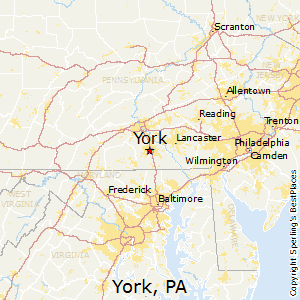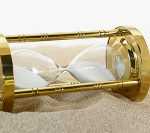

York was founded in 1741. During the winter of 1777-1778, when Washington’s army was encamped at Valley Forge and the British occupied Philadelphia, the capital of the young United States, the Continental Congress convened in York, where they adopted the Articles of Confederation, the first attempt at a constitution of sorts. As a result, some Yorkers claim that York was the first capital of the United States (which most historians dispute).
There is a bell, known as the York Liberty Bell, which is housed at St. John the Baptist Episcopal Church on North Beaver Street, which visitors can “bong” with a mallet to this day. That bell was dragged to the town square in July 1776 to announce the signing of the Declaration of Independence, and was rung to announce sessions of the Congress while sitting in York.
York was also the site of major intrigue in the winter of 1777-78. General Washington’s army had been badly beaten in several battles in 1777. By contrast, General Horatio Gates had been instrumental in winning the battle of Saratoga in New York. Some generals and politicians began to talk of replacing General Washington as commander of the Continental Army with General Gates.
This “plot” (it likely never really reached the level of a plot), known as the “Conway Cabal”, culminated in a banquet at the Gates House in York, the headquarters of General Gates while in York. The Marquis de Lafayette, a close friend and confidante of General Washington, was invited to the banquet. According to Lafayette’s memoir, he proposed a toast: “Gentlemen, there is one thing you have forgotten; I propose a toast to our Commander-in-Chief General Washington. May he remain at the head of the army until Independence is won.” That toast, which honor required those in attendance to join, brought an end to the conspiracy. [Sources: www.ushistory.org/march/other/cabal.htm; Living Places, www.livingplaces.com/PA/York_County/York_City/Golden_Plough_Tavern.html ] There is a statue of General Lafayette hoisting a cup outside the Gates House on West Market Street in York City.
Later, in 1781, General “Mad” Anthony Wayne set up headquarters in York to recruit for the campaign in Virginia, which ended in the surrender of Lord Cornwallis to General Washington’s troops at Yorktown, Virginia on October 19, 1781. Yorktown was the last major land battle of the war, assuring overall American victory and independence, and essentially ending the war (though it did not formally end until the Treaty of Paris was signed in 1783).
Many of us are completely unaware of York’s long history. To get a better understanding of York’s role in our country’s early history, and more, visit the Golden Plough Tavern/Gates House and the York County Historical Society. They are well worth the time. Also, to get an excellent lesson on York’s significant industrial and agricultural heritage, be sure to visit the York County Agricultural & Industrial Museum. It is one of my grandson’s favorite places (especially the full-sized working water wheel).
Bill Poole


